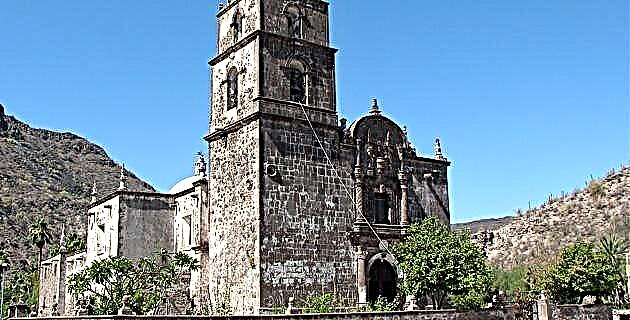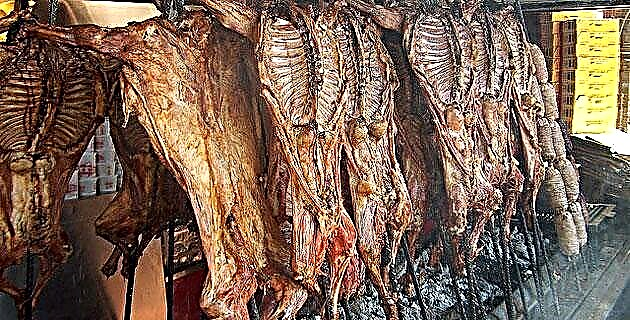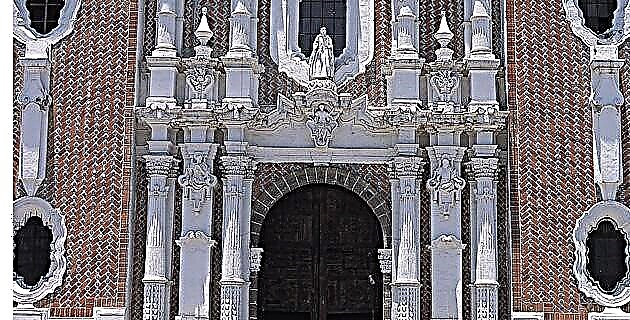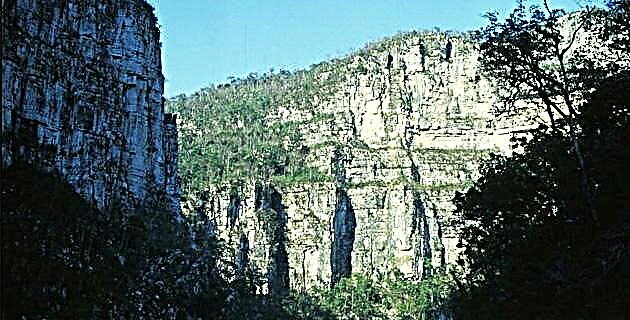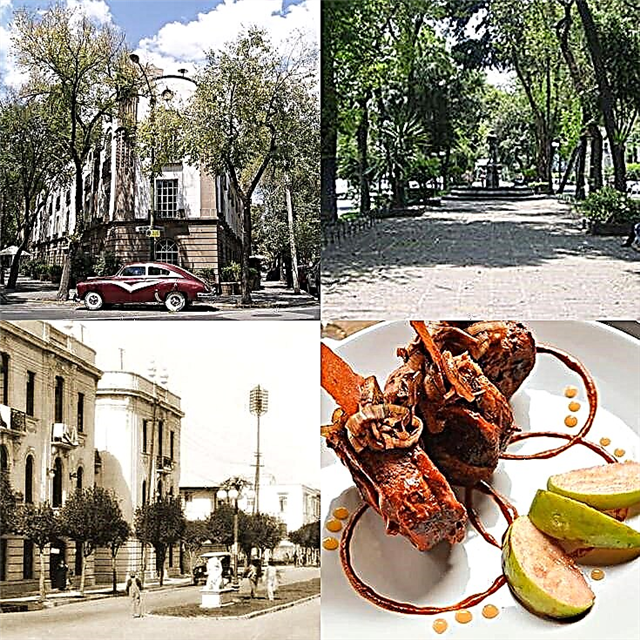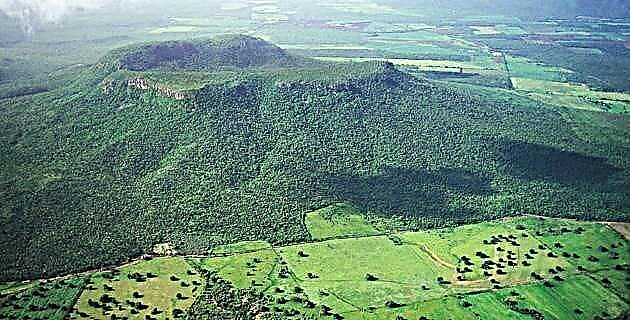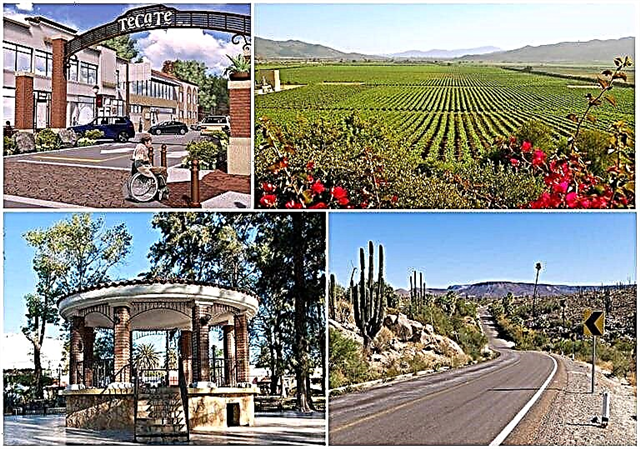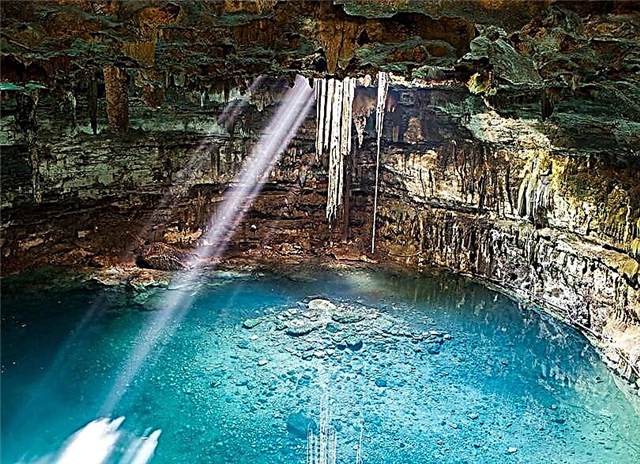Did you know that the state of Yucatán is characterized by its infinity of beautiful cenotes, not including those that have not yet been discovered in the virgin jungle?
Knowing that many, many wonderful places will be left out in the following restricted list to only 11, this is our selection with the best cenotes in Yucatan.
The best cenotes in Yucatán:
1. Cenote Xlacah
 It is located in the Archaeological Zone of Dzibichaltún, 24 km north of Mérida. It is the cenote for tourist use closest to the capital of the State of Yucatan.
It is located in the Archaeological Zone of Dzibichaltún, 24 km north of Mérida. It is the cenote for tourist use closest to the capital of the State of Yucatan.
"Xlacah" means "old town" in the Mayan language. This name refers to an ancient human settlement that is close to this water source and that dates from the Middle Preclassic period in Dzibichaltún.
It is a large open-air cenote, with transparent waters and a depth that reaches 44 meters on the northeast side, where a gallery opens whose extension is unknown.
Its dimensions are approximately 200 meters between east and west and 100 meters from north to south.
Its extensive calcareous plain of the perimeter is used as a natural platform for diving and its surroundings are a beautiful natural setting for observing the flora and fauna of the region.
In the Archaeological Zone of Dzibichaltún, the most important building is the Temple of the Seven Dolls, named for seven small clay images found during excavations in 1950.
2. Cenote Zací
 Of the cenotes in Yucatán, this is one of the most “urban”, since it is located less than 700 meters from the center of the Magic Town of Valladolid, being the favorite of Valladolid people to cool off on hot days.
Of the cenotes in Yucatán, this is one of the most “urban”, since it is located less than 700 meters from the center of the Magic Town of Valladolid, being the favorite of Valladolid people to cool off on hot days.
It is also a must for tourists who are going to enjoy the colonial charms of La Sultana de Oriente.
Zací was a Mayan settlement that used the cenote as a source of water. The water level is several meters from the surface, so you have to descend to the pond through a staircase made of natural stone.
On the way you can see stalactites and other rock formations.
Approximately halfway to the water mirror there is a ledge from which some divers practice their jumps.
In the cold and deep waters of the cenote lives a black fish that swims with visitors who venture to the depths.
Read our definitive guide to the magical town of Izamal, Yucatán
3. Cenotes Cuzamá: Chansinic’Ché, Bolon-Chohol and Chelentún
 Cuzamá is a picturesque Yucatecan municipal seat of less than 4000 inhabitants, located 45 km northwest of Mérida.
Cuzamá is a picturesque Yucatecan municipal seat of less than 4000 inhabitants, located 45 km northwest of Mérida.
Among the attractions of Cuzamá are its cenotes, its churches from the viceregal era and several Mayan archaeological sites located in the former Xcuchbalam estate.
The main local attraction is the cenotes of Chelentún, Chansinic’Ché and Bolon-Chohol, located in the henequen hacienda of Chunkanán, 4 km from the town.
Getting to these beautiful cenotes is a charming odyssey through the jungle, as it recalls the Yucatecan past with henequen or sisal, the natural fiber that gave Yucatan economic prosperity until the 20th century, before the invention of synthetic fibers.
The same railways used by the sisale companies to move henequen loads in wagons drawn by horses and mules, are used by the inhabitants to take tourists to the cenotes, also with animals as a means of traction.
These means of transport are called "trucks" by the locals and nowhere else in the world will you go to a cenote in such an adventurous way.
4. Cenote Lol has
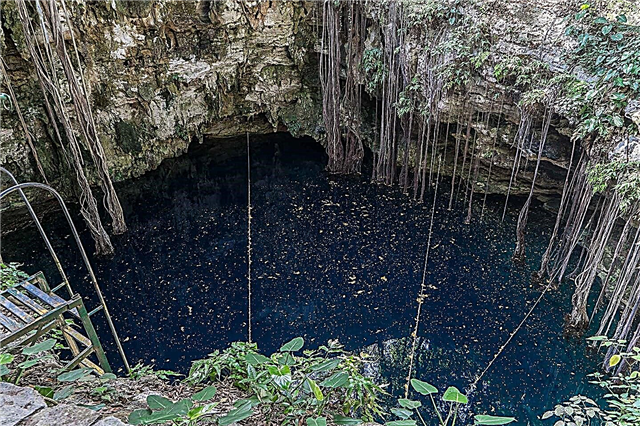 72 km to the southwest of the colonial city and Yucatecan Magic Town of Valladolid is the town of Yaxunah, whose great attractions are its archaeological site and its cenote.
72 km to the southwest of the colonial city and Yucatecan Magic Town of Valladolid is the town of Yaxunah, whose great attractions are its archaeological site and its cenote.
The Lol Ha cenote is a body of diaphanous water, open to the sky, with the mirror located several meters from the surface, so you have to descend to it through a vertigo staircase.
Adventitious roots and lianas descend on the interior sides of the cenote, giving the place a more wild and natural environment.
In the wooded surroundings of this cenote with beautiful blue waters you can appreciate the movement of birds and the sounds of the various animals that make up its fauna, such as iguanas, squirrels and raccoons.
The transparency of the cenote lets you see downwards for several meters and the waters reach variable depths between 8 and 16 meters. It also has an observation platform.
"Yaxunah" is a Mayan word that means "turquoise house" and the archaeological site had its heyday between the Middle Classic and Postclassic periods. Among the structures of the site, the North Acropolis and the House of the War Council stand out.
5. Cenote San Ignacio
 This semi-open cenote of magical beauty is located 41 km southwest of Mérida, on the road to Campeche.
This semi-open cenote of magical beauty is located 41 km southwest of Mérida, on the road to Campeche.
It has turquoise blue waters and has a lower part that ranges from 0.4 to 1.4 meters and a deeper part that reaches 7 meters, making it a natural pool of variable depth, ideal for splashing and swimming.
The cenotes that are not open to the sky have the peculiarity that they present an inverse thermal effect with respect to the surface temperature.
In the hot season, when the surface temperature approaches 40 ° C, in the San Ignacio cenote it is 26 ° C, a wonder to enjoy in the summer.
The place is managed by a company that keeps it in perfect condition, charging a fee of 80 MXN per person for access to the cenote. It also has a restaurant and offers "all-inclusive" packages for one day.
Near the San Ignacio cenote are the archaeological site of Oxkintok and the Calcehtok caves.
6. Cenote Ik-Kil
 It is one of the best known cenotes in Yucatán, since it is located 3 km from Chichén Itzá, in the Yucatecan municipality of Tinúm, and many tours towards the famous archaeological site include a stop in this beautiful body of water.
It is one of the best known cenotes in Yucatán, since it is located 3 km from Chichén Itzá, in the Yucatecan municipality of Tinúm, and many tours towards the famous archaeological site include a stop in this beautiful body of water.
The mirror is more than 20 meters from the surface and you have to go down a stair carved in the stone to reach the platform that gives access to the water.
It is an open-air cenote with a rounded shape, with a diameter of 60 meters and a depth of 40.
The setting is very beautiful, with small waterfalls and lianas and vines that go from ground level to water level.
The cenotes were sacred to the Mayans and the Ik-Kil was used as a water source, recreational site and place for rituals, including human sacrifices dedicated to Chaac, the god of rain.
It has hosted world diving competitions and there are cabins and a restaurant in the area.
7. Cenote Sambulá
 It is a closed cenote, with access through a stone staircase, located in the small town of Pebá, 43 km from Mérida.
It is a closed cenote, with access through a stone staircase, located in the small town of Pebá, 43 km from Mérida.
A cooperative of locals does the cleaning and maintenance of the area, charging a fee of 10 MXN per person.
It is a great cenote for people who are afraid of great depths, because the bottom is only 1.6 meters in the dry season and 2 meters in the rainy season.
It has fresh, blue and clear waters, excellent for taking a dip and in the surroundings you can admire rocky bodies of unique shapes.
On the platform that gives access to the water there are benches for visitors to leave their things in view.
Read our definitive guide on the magical town of Valladolid, Yucatán
8. Cenote Na Yah
 This cenote is located in the peaceful town of Pixyá, head of the Yucatecan municipality of Tecoh, 53 km south of Mérida.
This cenote is located in the peaceful town of Pixyá, head of the Yucatecan municipality of Tecoh, 53 km south of Mérida.
It is approximately 40 meters long by 30 meters wide and below its blue waters there are cavities that can be explored through diving. Of course, the necessary precautions must be taken.
In the surroundings of the refreshing and beautiful body of water there are areas of camping and for bonfires, as well as palapas.
In the town of Pixyá it is worth visiting the temples of La Candelaria and the Virgen de la Asunción, as well as the Chapel of the Holy Cross, all from the 18th century.
27 km south of Pixyá is the archaeological site of Mayapán, a Mayan city that was built in the image of Chichén Itzá.
When the Itzáes of Chichén fled their city to the Petén, Mayapán came to exercise control of northern Yucatán, which they ruled until 70 years before the arrival of the Spanish.
9. Cenote Noh-Mozón
 It is an open-air cenote but with a wide semi-vault of rock that partially serves as a roof. It is located near the Tecoh - Telchaquillo highway, in the municipality of Tecoh, after taking a somewhat steep dirt road.
It is an open-air cenote but with a wide semi-vault of rock that partially serves as a roof. It is located near the Tecoh - Telchaquillo highway, in the municipality of Tecoh, after taking a somewhat steep dirt road.
You have to go to a palapa that is before the cenote, where they sell the entrance and provide a life jacket.
The clean, fresh and crystalline waters are reached by descending a ladder. It has small platforms at different heights to practice diving.
It is a wide, deep cenote, little frequented by access difficulties and good for diving.
Small black fish live in the waters and various species of birds fly around the area, including swallows and birds with a showy blue plumage.
10. Cenote X’Batun
 It is an open-air cenote that is located near an old cocoa farm in San Antonio Mulix. When you get to the hacienda, you have to take a dirt road of just over 2 km to reach the body of water.
It is an open-air cenote that is located near an old cocoa farm in San Antonio Mulix. When you get to the hacienda, you have to take a dirt road of just over 2 km to reach the body of water.
San Antonio Mulix is a typical Yucatecan village located on the road to Uxmal, 50 km south of Mérida.
Among the cenotes in Yucatán, the X'Batun stands out for the transparency of its waters. It has caves for diving and is surrounded by thick vegetation that completes a paradisiacal environment.
In addition, there are hiking trails, palapas and areas for camping and bonfires.
11. Cenotes Popcorn and Fresh Water
 Both are closed cenotes and are located in the Agua Dulce Ranch, located near the town of Yalcobá, 24 km from the Magical Town of Valladolid.
Both are closed cenotes and are located in the Agua Dulce Ranch, located near the town of Yalcobá, 24 km from the Magical Town of Valladolid.
The Palomitas cenote is easily accessible, while the entrance to Agua Dulce is narrower and more respectable.
The first has a diameter of 50 meters and a depth of 45. The turquoise blue waters are very fresh and clear and you can swim and kayak. In the cavern there are stalactites that adorn the place with their whimsical shapes.
These cenotes are impressive for their silence and are magnificent to spend a relaxing time in the company of the relaxing power of the water.
Rancho Agua Dulce has a restaurant whose cuisine is praised for its exquisiteness. They also offer excursions through dry caves and rent mountain bikes to travel the trails that go to the cenotes.
How many cenotes are there in Yucatan?
Cenotes are beautiful bodies of fresh water formed by underground currents and rainwater eroding limestone rock.
They are very rare structures in the world and Mexico is the country most blessed by nature with these incredible formations.
There are three types: open, semi-open and closed. In the former, the water mirror is outdoors and they are the most easily accessible.
In semi-open cenotes, the body of water is inside a cavern and is reached through the entrance of the cavity.
The closed cenotes are inside caves without natural communication with the outside and the access to the pond is generally through cavities, with stairs practiced from the roof.
In the semi-open and closed cenotes there are usually nice rock formations, such as stalactites and stalagmites. Over time, the roof may collapse, turning into an open cenote.
The Yucatan peninsula has a huge concentration of cenotes, estimating that only in the state of Yucatan there are more than 7000. Among so many cenotes, it is difficult to indicate which are the most spectacular, but we will take a risk with this list.
Have you had the incomparable experience of bathing in one of these refreshing natural ponds formed over the millennia by the patient erosive work of the waters? We hope that you can do it in Yucatán very soon.
Share this article with your friends, so they also know which are the best cenotes in Yucatan.



